Table of Contents
** Minutes
5 key ecommerce warehousing operations
Warehousing logistics explained
6 important criteria to choose a warehousing solution
While it’s not the most glamorous aspect of running a business, warehousing is an incredibly important part of your retail supply chain. Warehousing and inventory storage affect everything from sourcing raw materials and efficiently managing inventory, to getting orders delivered to customers on time.
The principles of warehousing have not changed much over the years, but warehousing solutions have evolved a lot. With new technologies, urbanization, and the ever-growing world of online shopping, warehousing has never been a hotter topic — so much so that there has even been a shortage of warehouse space and on-demand warehousing for ecommerce businesses.
Read on to learn the ins and outs of warehousing and how your warehousing strategy impacts your business.
What is warehousing?
Warehousing is the process of storing physical goods or inventory in a warehouse or storage facility before they are sold or distributed.
Warehouses store and protect products in an organised way, making it easy to track an item’s location, as well as when the items arrived, how long the item has been there, and the quantity on hand.
New or smaller businesses typically won’t need a warehouse when they first start out, since they can store their inventory in a home, office, garage, or other smaller space. When they outgrow that space, a business will have to rent space in (or lease) a warehouse, or outsource logistics to a third-party and store inventory in that provider’s warehousing facilities.
In ecommerce warehousing, products are stored until an order is placed online, which triggers the order to be shipped directly to the consumer from the warehouse facility. In retail stores, inventory may be temporarily stored in a warehouse before it’s shipped to a brick and mortar store.
Warehousing vs. storage
The line between warehousing and storage is semantically blurry. Warehouses are for storage, but warehouses specifically store only goods that are intended for selling. As a result, most warehouses are very high-volume and fast-paced environments where products are being moved constantly.
Storage is a broader term, and mostly refers to non-commercial assets and liabilities being put away for safekeeping. Think of a storage unit: people put all the stuff that can no longer fit in their garage into their storage unit because their garage is full. The items they store in the storge unit aren’t usually goods to be sold – rather, it’s personal items that the owner intends to keep long term.
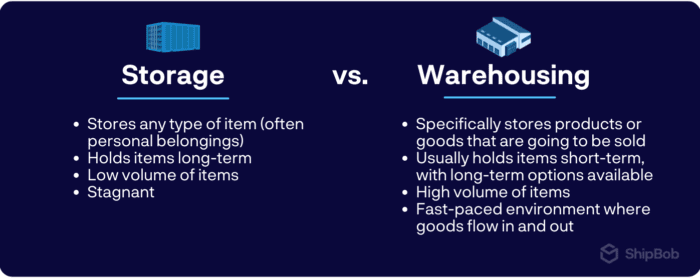
5 key ecommerce warehousing operations
When you buy something online, it seems like it magically shows up at your home; but before that, it was likely stored in a warehouse. It takes a lot of different ecommerce logistics and warehousing activities all working together to get a package to its final destination, so let’s dive deep into some of the most important ones.
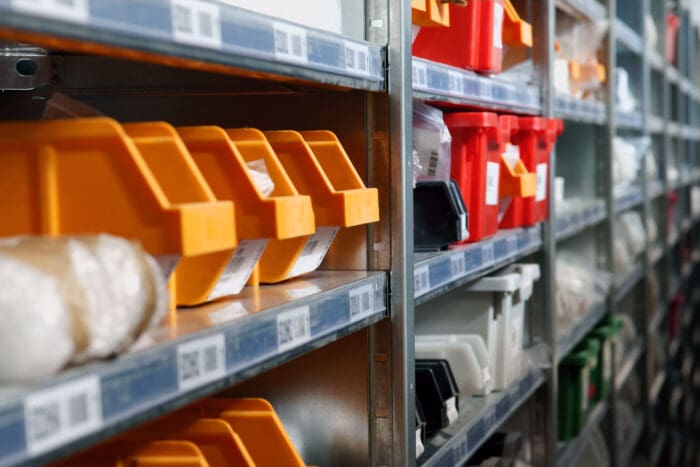
Storing inventory
Storing inventory refers to placing and holding specific products in designated locations. Each SKU you sell should have its own storage spot within your ecommerce warehouse. Warehousing and storage make it possible to:
- Pinpoint the exact location of any item of inventory
- Count the actual number of units on hand and compare it to the number of units listed
- Respond to product recalls, expired goods, and damaged inventory by knowing exactly which products are affected and where they are
- Ship out the oldest inventory first before anything that was more recently received
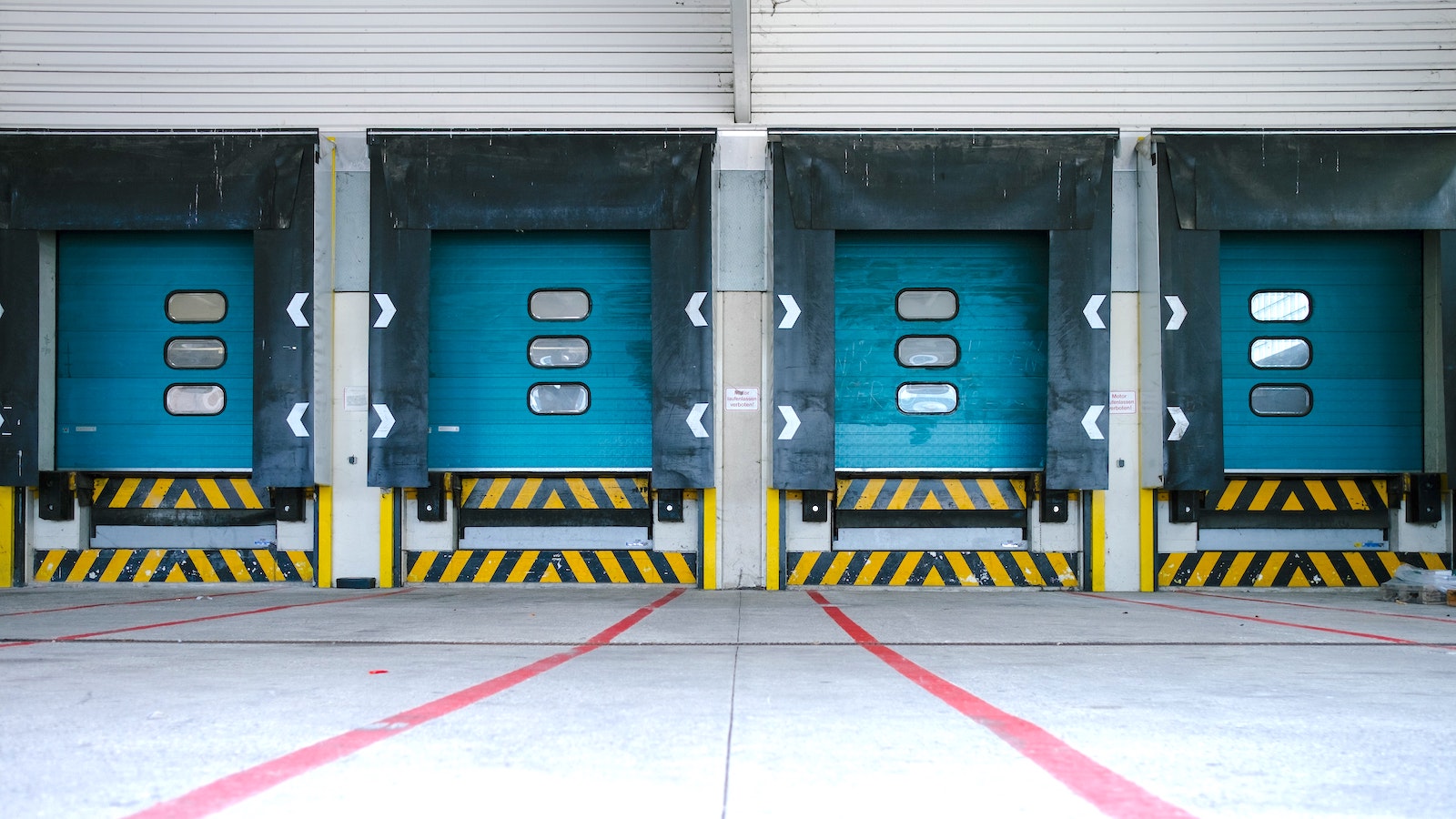
Receiving
Suppliers or manufacturers send inventory directly to an ecommerce merchant’s warehouse, where the products are received, stowed, and arranged in a way that makes for efficient movement to keep operations running smoothly. Warehousing operations must be optimised to accept incoming inventory in a timely manner, which means the workers must know which products are arriving and how many units of each to expect.

Shipping
When the inventory is ready to be transported again, shipping couriers such as DHL, USPS, and UPS pick up orders from the warehouse and ship them to their next destination. That next destination could be the end customer, a different warehouse or fulfilment centre, or even a retailer.
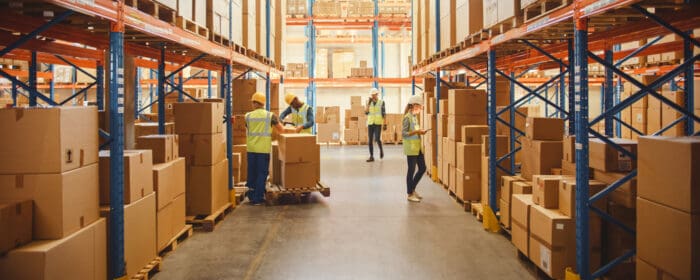
Distribution centres
Distribution centres are most often used by big box companies that have both a physical and online presence. They are best for shorter-term storage until product is needed, at which point it is typically sent directly to retail locations, wholesalers, or consumers. Distribution centres are demand-driven with products moving in and out at a rapid pace by trucks constantly dropping off and picking up items.

Returns
Part of warehousing logistics includes being prepared for product returns, especially when there is no in-store return option. Warehousing operations must be able to receive, assess, and process each returned item. You may even aim to provide customers with prepaid return labels, share return tracking and refund information, and make it as painless of an experience as possible for customers.
“ShipBob also makes it easy to handle return to sender (RTS) orders for lot products. Through the ShipBob dashboard, we can set up our preferences for each SKU that indicate exactly how we want ShipBob to handle a return – whether we want the item quarantined or disposed of – and ShipBob will automatically follow those rules so we don’t have to manage every customer-initiated return ourselves.”
Neil Blewitt, SVP of Operations at Bloom Nutrition
Warehousing logistics explained
Warehousing logistics is at the core of any business that sells physical goods. A few of the most important elements of warehousing logistics include warehouse management, warehousing operations, and warehouse management systems.
1. Warehouse management
Warehouse management is the process of strategically running the day-to-day operations in a warehouse to achieve operational excellence.
Managing a warehouse means overseeing all staff, training, inventory, equipment, safety and security, relationships with shipping couriers, warehouse slotting, and other moving pieces.
Responsibilities include:
- Forecasting and managing projected volume and labour
- Ensuring the proper safety gear is used and best safety practices are followed at all times
- Obtaining the proper licenses and certifications for anyone operating equipment
- Maintaining compliance, preventative maintenance for optimal performance, and requirements for regulatory agencies
- Continuously planning and managing operations as the business grows and becomes more complex
- Keeping goods secure and accessible and performing warehouse audits as needed
- Providing clear instructions on how to receive, unpack, retrieve, pack, and ship inventory
- Setting up bins and other storage spots in optimal places to minimise the effort required to move between destinations
- Recording all inbound and outbound shipments and collecting the proper documentation
2. Warehouse operations
Warehousing operations refers to all of the activities and functions that take place in a warehouse, particularly those involved in the movement of goods and tracking inventory.
Some of the most important functions include receiving inventory, then placing each SKU into a separate dedicated storage location (e.g., in a shelf, bin, or on a pallet), and sending product to its next destination.
Efficient warehousing operations help keep:
- Costs low
- Inventory received and shipped on time
- Staff productive
- Sufficient quantities of product on hand
- Space below capacity
- Storage optimised and aisles clear
- Equipment used effectively
- Customers happy
3. Warehouse management systems
A warehouse management system (WMS) is a software solution that provides the tools necessary to manage warehouse operations and inventory movement. Warehouse management systems help optimise inventory and tracking, warehousing operations, workload distribution, and shipping, and almost always save time and eliminate manual processes.
These types of warehousing solutions give you unprecedented visibility and real-time insight into every action that’s happening in the warehouse. A good warehouse management system will even help generate electronic picking lists based on orders that have inventory stored close to one another to decrease inefficiencies.
Poor ecommerce warehousing logistics can result in wasted money, delayed orders, and potential legal liabilities, but streamlined warehouse logistics can improve your bottom line and provide a top-notch customer experience. As such, it’s absolutely critical to find the right WMS to power your warehouse(s).
6 important criteria to choose a warehousing solution
There are many considerations that influence warehousing operations and management. Be sure to think through each of the following when researching warehousing solutions to find the best fit for your brand.
1. Storage costs and number of SKUs
SKUs aren’t just useful for keeping track of your inventory; they can also help you calculate potential storage fees and determine how much space you will need in a warehouse.
For example, for every shirt you sell, you will need a separate storage unit for each size (XS, S, M, L, XL, XXL, etc.) in every colour (yellow, red, blue, green, etc.) and style (long-sleeve, regular, pocket, etc.), and you will need to pay an individual storage fee for each variation. If you only have a handful of SKUs, storage will be much less expensive than if you have 1,000 SKUs.

However, if you have thousands of SKUs but you only sell a few orders each month, some warehousing companies may not be able to work with you. This is because of how fulfilment companies work. They don’t exist as standalone warehousing solutions — rather, they aim to turn inventory over quickly by fulfilling orders as soon as they are placed. This means you restock inventory often enough to keep up with demand and aren’t stuck paying high storage and logistics costs.
So, if you’re not selling a lot yet but have a large amount of SKUs and inventory, warehousing as a standalone solution will be a much more cost-effective option than an all-encompassing fulfilment service that has separate fees for receiving inventory, shipping orders, warehousing, and storage.
Warehousing fees can range from per-SKU or per-unit storage to a fixed fee for each bin, shelf, or pallet used. ShipBob charges for warehousing on a per-shelf, bin, and pallet basis, so you only pay for the space you use on a monthly basis.
2. Seasonality of your business
Seasonal fluctuations in your supply chain management and demand can make warehousing logistics very complicated. If your sales fluctuate seasonally or month-over-month, leasing a dedicated space or warehouse for your business may become costly during the low-demand seasons or lead to a shortage of space when you get a new batch of inventory or during peak season and the holidays.
That’s why handing off logistics to an expert partner like ShipBob can help prevent you from being stuck in either extreme.
3. Location of the warehouse
The optimal location for a warehouse will depend on your needs.
If your goal is to store a lot of product in bulk over a long period of time, you can pay less by finding a rural location or a facility near a transportation hub.
If your goal is to get orders delivered to customers as quickly as possible, you’ll want a fulfilment warehouse near your customers’ shipping destinations. Warehouses in urban areas or big cities can deliver your orders to large populations very quickly. This helps meet customer expectations such as expedited shipping by reducing the distance travelled and time in transit.
If your customers don’t all reside in one geographic area, a more centrally located warehouse can help reach more regions more efficiently as opposed to just one coast.
4. Number of warehouses you store inventory in
As your business grows, logistics will become more complex and you’ll probably need to expand your storage network. To optimise your supply chain and reduce shipping costs, you’ll need to select the most favorable locations in terms of size and geography.
Making sure you have enough space for your current inventory volume but also future growth will help prevent you from outgrowing the warehouse immediately. You should also pay attention to sales trends over time to monitor where orders are shipped to.
If you are shipping to zones that are far away from your warehouse, you will pay more in shipping costs and have a longer time in transit. Having warehouses in multiple regions near your customers can help you offer affordable 2-day shipping and reduce abandoned carts.
For example, ShipBob has fulfilment centres all over the United States (and around the world), enabling ecommerce businesses to distribute their inventory and take advantage of the extensive geographic footprint.
“Expanding our warehouse network from 2 to 4 warehouses has translated into $1.5 million in freight cost savings for Our Place. It also cut our fulfilment and shipping times in half, from 5 or 6 days to just 2.5 days.”
Ali Shahid, COO of Our Place
If you use multiple fulfilment warehouses, you’ll need full visibility into real-time stock levels across each location to make informed decisions and ensure each order is routed to and shipped from the warehouse that’s closest to the shipping destination.
5. Warehouse management technology
Whether you plan to manage your own warehouse or outsource supply chain management to a third-party, technology is a critical piece of warehouse management and operations. Fulfilment software automates the order fulfilment process while bringing together orders, shipments, inventory levels, logistics centres, and customers in one place.
By connecting your sales channels, the same technology will automatically send orders to the warehouse for associates on the floor to begin picking. Each step of the process is recorded and tracking information is sent back to the customer.
Ideally, any warehousing solution you adopt will have a WMS that delivers all of these capabilities. ShipBob’s WMS, for instance, powers every warehouse and fulfilment centre in ShipBob’s network, and ecommerce merchants that outsource fulfilment to ShipBob can use the system to achieve the visibility and insight into warehouse that they need to run their business effectively.
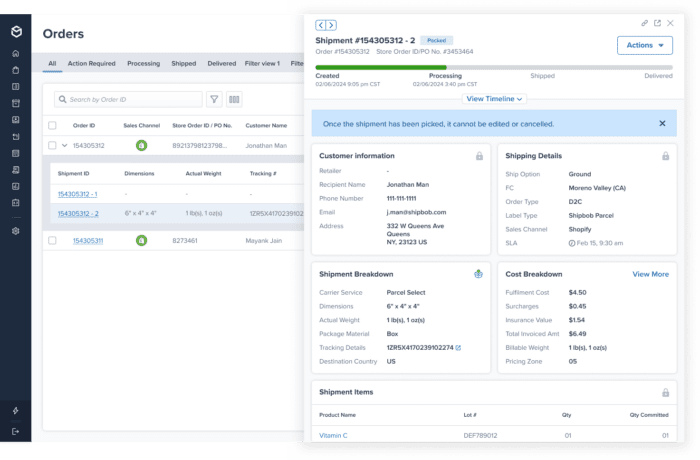
Have your own warehouse? Upgrade it to ShipBob’s WMS
If you want to manage your own warehousing solution, ShipBob has a best-in-class warehouse management system (WMS) for brands that have their own warehouse and need help managing inventory in real time, reducing picking, packing, and shipping errors, and scaling with ease.
With ShipBob’s WMS, brands can even leverage ShipBob’s fulfilment services in any of ShipBob’s fulfilment centres across the US, Canada, Europe, the UK, and Australia to improve cross-border shipping, reduce costs, and speed up deliveries.

6. Value-add services
If you’re in need of additional services outside of traditional warehousing, pick, pack, and ship functions, be sure to find a company that can handle your unique requirements such as kitting and assembly, cross-docking, B2B orders, temperature-controlled storage, refrigeration services, and whatever else your business may need.
Want to outsource it all to a leading fulfilment partner?
Warehousing affects every business that sells products. Choosing the right warehousing solution can help save money, meet customer demand, and drive efficiency. Working with a professional logistics partner is very common for ecommerce businesses that don’t want to manage a warehouse themselves.
As an expert supply chain and fulfilment platform, ShipBob has helped thousands of ecommerce brands scale their warehousing strategy as they grow. In addition to offering flexible storage space in dozens of fulfilment centres across the US, ShipBob’s team of logistics experts will take on warehouse operations like picking, packing, shipping, and returns handling for you, plus provide you deep visibility into performance metrics, key analytics, cost breakdowns, and more.
For more information on how ShipBob can help you with warehousing, click the button below to get in touch.
Warehousing FAQs
Here are some of the common questions we’ve heard from our customers related to warehousing.
What are functions of warehousing?
The main functions of running a warehouse include:
- Overseeing staff
- Training
- Storing and managing inventory and equipment (i.e., forklifts, ladders, racks, etc.)
- Safety and security
- Relationships with shipping couriers
What are the types of warehouses?
Not all warehouses are the same. Some warehouses are designed purely for inventory storage. In ecommerce, the most common type of warehouse is a fulfilment centre, which is managed by a third-part logistics partner like ShipBob. A fulfilment centre not only receives and store inventory, but it also automatically fulfils and ships orders on the merchant’s behalf.
How does warehousing fit into your supply chain?
Supply chains are being redesigned to fulfil orders faster than ever before, and warehousing logistics plays a direct role in making that come to fruition. To move finished goods through the supply chain, most inventory is shipped from a manufacturer, often from overseas, to a warehouse.
Some warehouses are used for longer-term storage while others conduct the entire order fulfilment process, turning inventory over very quickly. Unlike warehouses that are strictly storage facilities, a fulfilment warehouse handles warehousing but also continuously picks, packs, and ships orders to customers.
This can be managed in-house by an individual retailer or outsourced to a third-party logistics company that manages fulfilment for many companies.
How does automation improve efficiency in warehousing operations?
Automation streamlines repetitive or menial tasks that a human would otherwise have to spend time and energy to do manually. Automation can also optimise processes and activities for speed, cost, and accuracy, so that the result is even better than it would be if the task were to have been done manually.
How do you optimise warehouse space utilisation?
Warehousing space is expensive, so brands should strategically set up their warehouse to maximise available storage space. Leverage warehouse racking systems to capitalise on vertical space, and consider what warehouse layouts are most conducive to your receiving, storage, and shipping workflows.
At the same time, make sure to leave ample room in the aisles so that people and equipment can move quickly and safely.
Does ShipBob help with ecommerce warehousing?
Yes! ShipBob is an expert supply chain and fulfilment platform and uses proprietary software across dozens of fulfilment centres to optimise warehousing for thousands of ecommerce brands. When you partner with ShipBob, your orders are automatically sent to a ShipBob facility, where inventory is picked, packed, and shipped to end customers.




